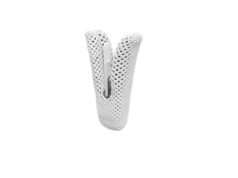
Data from the ABSORB IV study indicate that device thrombosis with the bioresorbable vascular scaffold (Absorb, Abbott) is substantially reduced when the device is not implanted into very small vessels. However, the study also showed greater ischaemia-driven target lesion failure with the scaffold than with a permanent metallic everolimus-eluting stent (Xience, Abbott)—indicating that device as well as technique improvements is necessary
Previous studies have shown that compared with Xience, Absorb is associated with a significantly higher rate of target lesion failure (at two years) and a higher rate of device thrombosis (at three years). Following the publication of these studies, Absorb was taken off all markets because of poor commercial sales. However, some believe that a better implantation technique—predilatation, appropriate vessel sizing, and postdilatation (“PSP”)—may improve outcomes with device.
Unlike the earlier studies of Absorb, the protocol of ABSORB IV mandated that patients with small vessels (<2.5mm) were excluded from the study. Furthermore, according to Gregg Stone (New York Presbyterian Hospital, Columbia University Medical Center, New York, USA), “aggressive predilatation and routine high-pressure postdilatation were encouraged”.
Presenting the results of ABSORB IV at the 2017 Transcatheter Cardiovascular Therapeutics (TCT) meeting (29 October–2 November, Denver, USA), Stone reported that 2,604 patients with stable disease or acute coronary syndrome with one to three target lesions were randomised to undergo percutaneous coronary intervention (PCI) with Absorb (1,296) or with Xience (1,308). He commented that the primary endpoint was the rate of target lesion failure at 30 days, and target lesion failure at three, seven and 10 years (pooled with data from ABSORB III). The secondary endpoints included target lesion failure at one year and angina at one year.
At 30 days, there were no significant differences in the rate of target lesion failure between groups: 4.6% for Absorb vs. 3.7% for Xience. This finding meant that the study met its primary endpoint that Absorb was non-inferior to Xience (p=0.006 for non-inferiority). However, ischaemia-driven revascularisation was significantly higher with Absorb—1.4% vs. 0.6% for Xience (p=0.046). This result was due to ischaemia-driven target vessel revascularisation being significantly higher with Absorb (1.2% vs. 0.2%, respectively; p=0.003), which in turn related a higher rate of ischaemia-driven target lesion revascularisation with the device (1% vs. 0.2%; p=0.01). Furthermore, there was a trend towards a higher rate of device thrombosis: 0.6% for Absorb vs. 0.2% for Xience (p=0.06).
According to Stone, the optimal technique used in ABSORB IV was favourable “for both Absorb and Xience” when the results of the study were compared with those of ABSORB III. He said: “Compared with ABSORB III, reducing the number of very small vessels treated in ABSORB IV substantially reduced the device thrombosis rate with the bioresorbable vascular scaffold but also with the cobalt chromium everolimus-eluting stent.” In ABSORB III, 18.3% of vessels treated were less than 2.25mm compared with 2.7% in ABSORB IV. However, mean predilatation and postdilatation pressures in ABSORB IV were similar to those of ABSORB III.
“These data, which are largely consistent with those from earlier ABSORB trials, emphasise the need for advancements in device technology and standardised technique to further improve the early safety profile of the bioresorbable vascular scaffold,” Stone concluded.
Earlier in 2017, the AIDA study—presented at the 2017 EuroPCR meeting and published in The New England Journal of Medicine—found that implantation technique was not an independent predictor (nor was any other factor) of device thrombosis.
Stone told Cardiovascular News: ““For bioresorbable scaffolds to be competitive with the best metallic drug-eluting stents in the short-term (prior to their complete bioresorption), they will need to be substantially thinner and have improved radial strength and expansion characteristics. Such devices are currently under development by several manufacturers. They also need to be implanted using the optimal techniques that we have identified from the ABSORB trials.”












